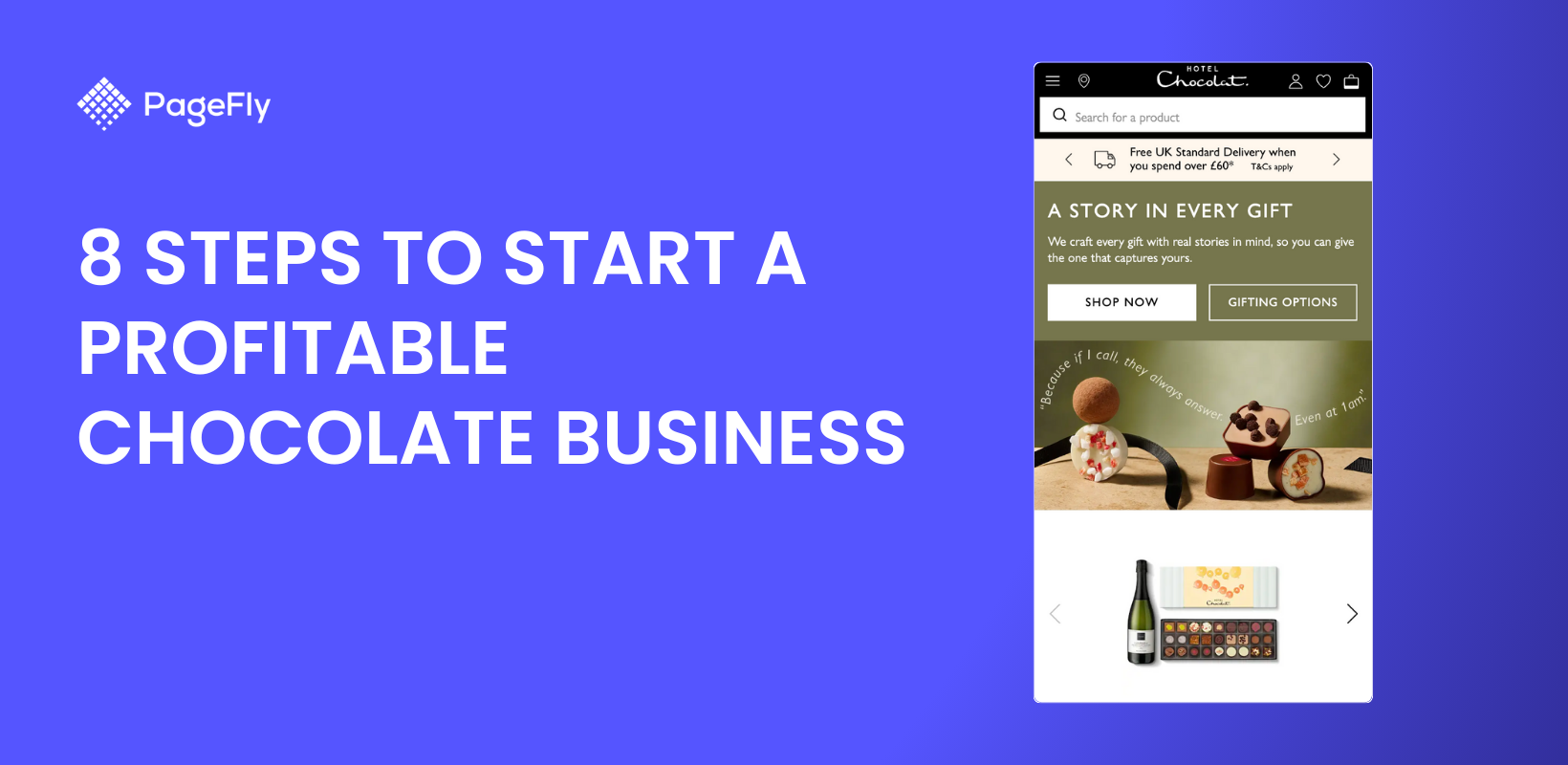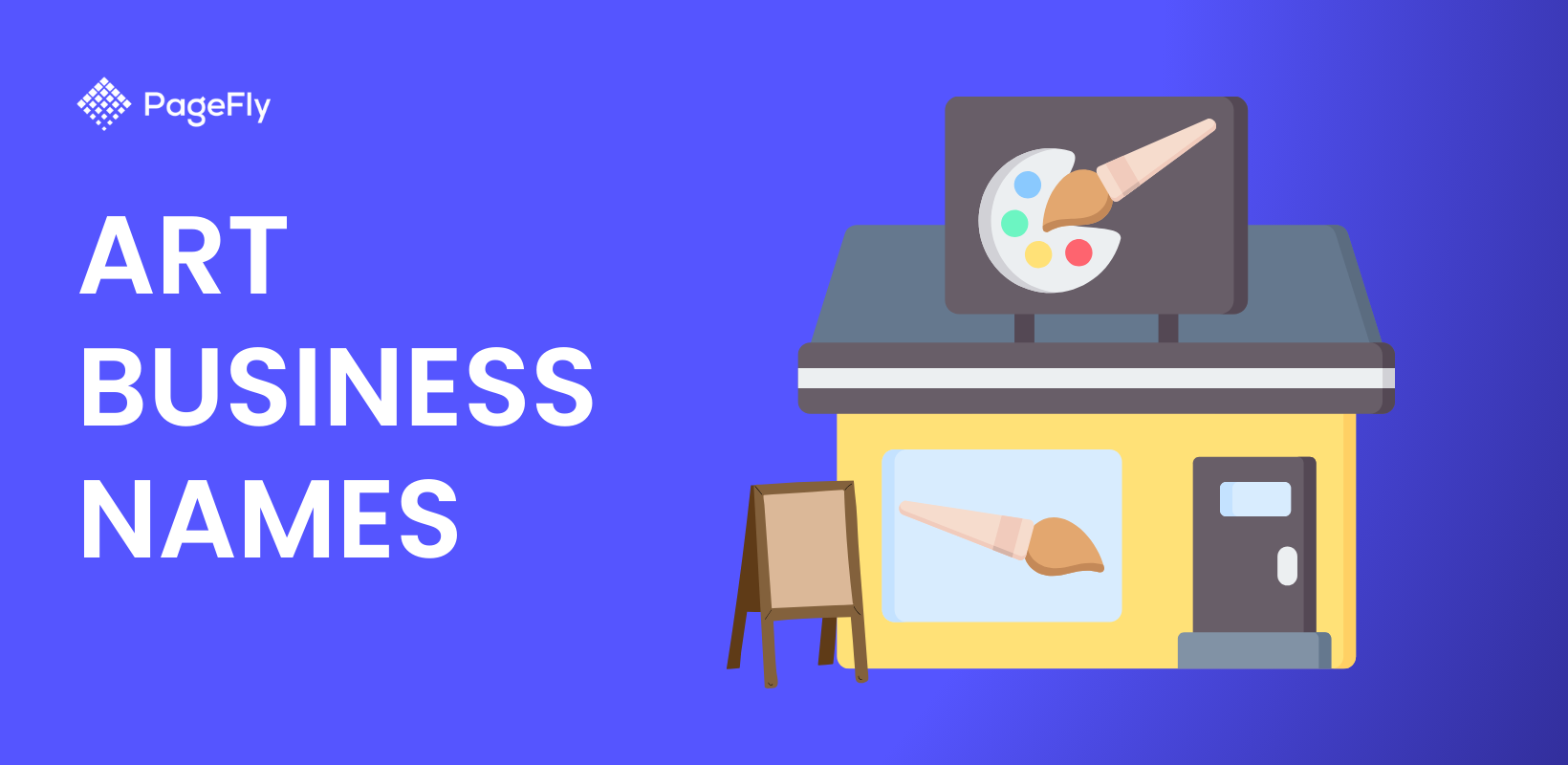Starting a chocolate business from home is an achievable dream that combines passion with profit potential in the growing artisan food market. Whether you envision launching an artisan chocolate business focused on handcrafted truffles or developing a chocolate subscription business serving monthly curated selections, the chocolate industry offers multiple pathways to entrepreneurial success.
The chocolate business landscape provides excellent opportunities for home-based entrepreneurs, with startup costs as low as $3,000 and profit margins reaching 50-70% for specialty chocolates. From bean-to-bar chocolate making to custom corporate gifts, successful chocolate businesses serve diverse market segments including health-conscious consumers, luxury gift buyers, and businesses seeking unique employee perks.
This comprehensive guide walks you through 8 essential steps to launch your chocolate business, covering everything from regulatory requirements and equipment selection to marketing strategies and financial planning. You'll learn how to choose between different business models, understand licensing requirements, and develop products that stand out in today's competitive marketplace.
Examples include chocolate-covered raisins, chocolate-covered nuts, chocolate caramels, chocolate fountains, and chocolate toffees. If chocolate makers enjoy chocolate and have some culinary skills, you could start your own chocolate business and earn well while cheering up lots of people. If your candies are exceptional, you may be able to capture a portion of that sizable market since fine, handmade chocolates command a premium.
しかし、料理を始める前に、チョコレート・ビジネスの才覚を養う必要がある。幸いなことに、このステップ・バイ・ステップのマニュアルを読めば、繁栄するチョコレート・ビジネスを立ち上げるために必要な起業家としての知識をすべて学ぶことができる。
チョコレート・ビジネスはあなたに適していますか?
長所と短所
チョコレート・ビジネスを始めることが自分に向いているかどうかを決める前に、利点と欠点をよく吟味してください。
長所
- 情熱を分かち合う- あなたの技術やチョコレートへの愛を他の人と分かち合う
- グッド・マネー- チョコレートの利益率は高い
- 柔軟性- 自宅でビジネスを行い、自分の時間を設定できる。
短所
- 時間がかかる- チョコレートの製造と包装には時間がかかる。
- 飽和市場- チョコレート業界は競争が激しい。
チョコレート業界の動向
業界の規模と成長
- 業界規模と過去の成長 -2021年、米国のチョコレート事業規模は190億ドルで、その前の5年間よりわずかに減少した。
- 成長予測 -今後5年間、米国のチョコレート市場はわずかに増加すると思われる。
- 企業数 - 2021年には合計3482のチョコレート・ブランドが米国で活動していた。
- 雇用者数 -2021年には43,017人が米国のチョコレート製造業に従事していた。

ソースステップ・バイ・ステップ・ビジネス
傾向と課題
チョコレート・ビジネスのトレンドは以下の通りである:
- フルーツやナッツ入りのチョコレートに加え、植物由来やヴィーガンの選択肢が人気を集めている。
- チョコレートの栄養価を高めるために、アルテル・エコ・フーズ、フー・キッチン、レイク・シャンプレン・チョコレートなど多くのチョコレート・メーカーは、ビタミンや抗酸化物質を含むレシピを開発している。
チョコレート・ビジネスにおける課題には次のようなものがある:
- チョコレート製造会社の利益率は、カカオ、ココアバター、砂糖、アーモンド、バニラの価格上昇によって影響を受けている。
- カカオ栽培による森林伐採が新たな規制を生み、その結果、商品が不足する可能性がある。
チョコレート・ビジネスを始めるにはどれくらいの費用がかかりますか?
チョコレート・ビジネスを始めるには、3,000ドルから8,000ドルの費用がかかる。この価格には、チョコレートを作るための包装資材、材料、機械などが含まれる。
チョコレート作りのクラスに参加することもできる。
チョコレート・ビジネスの立ち上げを成功させるには、以下のようなものが必要です:
- キャンディー温度計
- 鍋とフライパン
- ストーブ
- ベーキングシート
- ミキサー
- ミキシングボウル
- 冷蔵庫
- 梱包資材
どのような参入障壁があるのか?
チョコレートビジネスを始めるには、いくつかの障害があります。主な障害は以下の通りです:
- 美味しいチョコレートを作る能力
- アンソニー・トーマスやロッキーマウンテン・チョコレート・カンパニーのような老舗企業が存在する市場への参入
関連ビジネスのアイデア
Choosing Your Chocolate Business Model
Before diving into startup costs and equipment, it's crucial to define your specific chocolate business model. Each approach has different startup requirements, profit margins, and target markets.
Artisan Chocolate Business Models
Bean-to-Bar Chocolate Making: This premium model involves sourcing cacao beans directly from farms and controlling the entire chocolate-making process. Startup costs range from $15,000-$50,000 for equipment, but profit margins can reach 70-80% for premium bars selling at $8-15 each. This model appeals to conscious consumers seeking transparency and unique flavor profiles.
Artisan Chocolatier Confections: Focus on handcrafted truffles, bonbons, and filled chocolates using high-quality couverture chocolate. Lower startup costs ($3,000-$8,000) but requires significant time investment. Successful artisan chocolatiers often charge $30-60 per pound for handmade confections.
Custom Chocolate Creations: Specialize in personalized chocolates for weddings, corporate events, and special occasions. This B2B model offers higher margins ($50-100+ per order) but requires strong marketing and customer service skills. Popular offerings include custom molds, branded packaging, and seasonal designs.
Chocolate Subscription Business Opportunities
Curated Chocolate Discovery Boxes: Monthly subscription boxes featuring chocolates from different regions or makers. Successful models like Chococo and ChocoVine generate $30-50 monthly recurring revenue per subscriber. Requires strong supplier relationships and marketing investment but offers predictable recurring income.
Personalized Health-Focused Subscriptions: Target health-conscious consumers with sugar-free, vegan, or keto-friendly chocolate options. Premium pricing ($40-80 per monthly box) serves niche markets willing to pay for dietary-specific products.
Corporate Wellness Programs: B2B subscription model providing healthy chocolate snacks to offices. Companies increasingly invest in employee wellness, making this a growing market segment with contracts worth $500-5,000+ monthly.
Hybrid Business Model Strategies
Retail + Online Combination: Many successful chocolate businesses combine physical retail presence with e-commerce and subscription offerings. This diversified approach reduces risk and maximizes revenue opportunities across different customer segments.
Education + Products: Offer chocolate-making classes, workshops, and team-building events alongside product sales. This high-margin service component (classes typically charge $50-150 per person) builds brand loyalty while generating additional revenue streams.
Seasonal Specialization: Focus on high-demand periods (Valentine's Day, Easter, Christmas) while maintaining smaller operations during slower months. This model can generate 60-80% of annual revenue during peak seasons.
このビジネスコンセプトがあなたにとって最適かどうか、まだわからないという方のために、起業成功への道を支援する関連ビジネスチャンスをいくつかご紹介しよう。
チョコレート・ビジネスを始めるための8つのステップ
1.ビジネスプランの作成
どんな会社にも戦略が必要だ。これは、あなたのスタートアップが主要な目標に集中しながら立ち上げプロセスを乗り切るためのマニュアルの役割を果たす。さらに、事業計画は、潜在的な投資家やパートナーがあなたの会社とその使命を理解するのに役立つ:
- エグゼクティブ・サマリー:ビジネスプラン全体の簡潔な要約。
- 事業の概要:オーナーシップ、ビジョン、ミッションを含む事業の概要。
- 製品とサービス:サービス内容を詳しく説明する。
- 市場分析:SWOT分析は、需要の変動や成長の見通しなど、市場の動向を評価するために使用されるべきである。
- 競合分析:主な競合他社の強みと弱みを分析した上で、自社サービスのメリットをリストアップする。
- 販売とマーケティング事業のユニーク・セリング・プロポジション(USP)を検討し、販売、マーケティング、プロモーション計画を立てる。
- 経営陣企業ヒエラルキー、各人の責任と経歴に関する情報を含む経営陣の概要。
- 運営計画:事業の運営計画には、ロジスティクス、オフィスの所在地、主要資産、設備などを明記する。
- 財務計画:立ち上げコスト、損益分岐点分析、損益予測、キャッシュフロー、貸借対照表を含む3年間の財務計画。
- 付録追加の財務または商業文書を追加する。
ビジネスプランを書くのは、やったことがないと気が重くなるものです。Fiverrのビジネスプランの専門家にお金を払って、一流のビジネスプランを書いてもらうことを考えるかもしれません。
💡Quick Read-2023年のアメリカにおけるビジネス・アイデア・トップ10
2.チョコレートのビジネスネームのアイデアを出し合う
あなたの目標、商品、使命を的確に表現するチョコレート・ビジネスネームのアイデアを見つけましょう。チョコレート・ビジネスの名前は、あなたの会社のアイデンティティとなります。あなたのビジネス、特に最初のビジネスの大部分は、友人や家族からの推薦によるものであることを考えると、簡潔で覚えやすい名前がいいでしょう。
ここでは、チョコレートのビジネスネームを考えるためのアイデアをいくつかご紹介します:
- 短く、ユニークで、キャッチーな名前は目立つ傾向がある。
- チョコレートのビジネスネームは、言いやすくスペルも簡単なものが好まれる傾向にある。
- チョコレートのビジネスネームは、提供する製品やサービスに関連したものであるべきです。
- 家族、友人、同僚、ソーシャルメディアなど、周囲に提案を求める
- チョコレート」や「チョコレート菓子」などのキーワードを含めることで、SEO効果が高まります。
- 例えば、"Jim's Bakery "は "Jim's Cookies "を超える。
- 将来的な事業拡大の妨げになるような地名は避ける
- Chocolate Business Name Generatorのようなオンラインツールを使ってください。キーワードをいくつか入力し、"generate shop name "をクリックするだけで、ユニークなチョコレートのビジネスネームが何十種類もあなたの指先に現れます。
3.企業の構造
法人を設立する
事業体には多くの種類があり、それぞれに利点と欠点があります。チョコレート会社の法的構造を選択する際には、税金、個人責任、ビジネス登録要件に影響するため、賢明な決断を下しましょう。
主なオプションは以下の通り:
- 個人事業
- ゼネラル・パートナーシップ
- 有限責任会社(LLC)
- C社
- S社
LLCは株式会社よりも設立が簡単で、責任保護とパススルー課税を提供するため、私たちは新しいビジネスオーナーにLLCを選択するようアドバイスしています。
チョコレート・ビジネスの登録
さらに、登録は手続きを正式なステータスにするので、とてもエキサイティングです。登録が完了すれば、あなたは自分のチョコレート・ビジネスを持つことになる!
会社の登記場所を選ぶ
税金、法的要件、収益に影響を与える可能性があるため、ビジネスの場所は非常に重要です。大半の人は、現在居住している州で事業を登録しますが、成長を計画しているのであれば、他の州に目を向けた方がよいかもしれません。
あなたのチョコレート・ビジネスは、あなたが移転することを厭わなければ、本当に成長する可能性があります。チョコレート・ビジネスを他の州に移転することはそれほど難しいことではありません。
納税登録
雇用者番号(EIN)の取得は、納税を開始する前の最後のステップです。EINのオンライン、郵送、ファックスでの申請方法については、IRSのウェブサイトをご覧ください。個人事業として運営することを決めた場合、EINは単に社会保障番号でもよいことを覚えておいてください。
正しく申告するためには、会計士などの専門家のアドバイスを受けることが重要です。
ビジネス銀行口座とクレジットカードの開設
個人資産を保護するためには、特別なビジネス・バンキングやクレジット口座を利用することが極めて重要である。
さらに、ビジネスの信用を確立する方法を理解することで、ローンやクレジットカード、その他の融資を自分の名義ではなく、チョコレート・ビジネスの名義で受けることができ、より良い条件や限度額を得ることができます。
ビジネス銀行口座の開設
ビジネス銀行口座の開設が必要な理由はいくつかある:
- 個人資産を事業資産から分離することは、個人資産保護の要件である。
- 会計と税務申告を簡素化。
ネット30口座開設
ネット30アカウントは、ビジネスの信用を構築・維持し、キャッシュフローを促進するために使用される。企業はネット30口座を利用して商品を購入し、30日以内に残高全額を返済する。
ビジネス・クレジットカードを作る
ビジネス・クレジットカードを持つことは、あなたの助けになる:
- 会社の経費を一箇所にまとめる。
- これは、資金調達が必要になった場合に役立つ。
企業会計の設定
ビジネスの財務状況を把握するには、すべての経費と収入源を記録しておくことが重要です。正確で綿密な記録を維持することで、毎年の税務申告もより簡単になります。
Food Safety & Regulatory Compliance Requirements
Starting a chocolate business requires strict adherence to food safety regulations and obtaining proper certifications. These requirements vary by location and business model, so always consult local authorities for your specific situation.
Essential Food Safety Certifications
Food Handler's Permit: All chocolate business owners must obtain food safety certification. In most states, this involves completing a ServSafe course or equivalent training program. The certification covers proper food handling, storage temperatures, cross-contamination prevention, and personal hygiene standards.
HACCP Compliance: Larger operations may need Hazard Analysis Critical Control Points (HACCP) plans. This systematic approach identifies potential food safety hazards and establishes critical control points in your chocolate production process.
FDA Requirements for Chocolate Businesses
Facility Registration: If you plan to sell across state lines or to wholesalers, you must register your facility with the FDA under the Food Safety Modernization Act (FSMA). This applies even to home-based operations that sell interstate.
Nutritional Labeling: All packaged chocolate products must include proper nutritional facts panels, ingredient lists, and allergen warnings. Common allergens in chocolate include milk, nuts, soy, and wheat. The FDA requires specific formatting and font sizes for these labels.
Good Manufacturing Practices (GMP): Your production area must meet FDA standards for cleanliness, equipment sanitation, and employee hygiene. This includes proper hand-washing stations, hair restraints, and clean clothing requirements.
State and Local Licensing Requirements
Business License: Register your business entity (LLC recommended) and obtain local business permits. Check with your city clerk's office for specific requirements.
Food Facility License: Your state health department will require a food facility license and regular inspections. Inspection frequency typically ranges from quarterly to annually, depending on your state and business size.
Cottage Food Laws: Many states offer simplified regulations for home-based food businesses. These "cottage food" permits often limit where you can sell (direct sales only, farmers markets, etc.) and may cap annual revenue. States like California allow up to $75,000 in cottage food sales annually.
Specialty Considerations for Artisan Chocolate
Organic Certification: If marketing organic chocolates, obtain USDA Organic certification through an accredited certifying agency. This process typically takes 6-12 months and requires detailed documentation of your supply chain.
Fair Trade Certification: For ethically-sourced chocolate claims, consider Fair Trade USA or Rainforest Alliance certification. This adds credibility but requires ongoing fees and compliance monitoring.
Allergen Controls: Implement strict allergen management if producing both nut-containing and nut-free chocolates. This may require separate production areas or thorough cleaning protocols between batches.
Insurance and Liability Protection
Product Liability Insurance: Essential for any food business. Policies typically range from $1-5 million coverage and cost $500-2,000 annually for small chocolate businesses.
General Business Insurance: Protects against property damage, theft, and general liability claims. Many insurers offer small food business packages combining multiple coverage types.
必要な許認可を取得しなかった場合、重い罰金や事業閉鎖に至ることもあります。
4. Essential Equipment for Your Chocolate Business
The equipment you need depends on whether you're starting as a chocolatier (working with pre-made chocolate) or chocolate maker (bean-to-bar production). Here's a comprehensive breakdown of equipment options and costs for different business scales.
Home-Based Chocolatier Equipment ($1,500 - $3,500)
Essential Tools for Chocolate Confections:
- Digital candy thermometer ($25-50): Critical for proper chocolate tempering
- Stand mixer (5+ quart) ($200-400): KitchenAid Professional or equivalent for ganache and fillings
- Chocolate melting machine ($150-300): Double boiler or specialized chocolate melter
- Silicone molds ($50-150): Professional-grade molds for truffles, bars, and bonbons
- Digital scale ($30-80): Essential for consistent recipes and portion control
- Dipping forks ($20-40): Professional chocolate dipping tools
- Sheet pans and cooling racks ($50-100): Food-grade stainless steel preferred
Packaging and Storage Equipment:
- Vacuum sealer ($100-200): Extends shelf life and creates professional packaging
- Heat sealer ($50-150): For custom packaging and labels
- Commercial refrigerator ($800-1,500): Dedicated storage for finished products
- Storage containers ($50-100): Food-grade containers for ingredients
Small-Scale Bean-to-Bar Setup ($8,000 - $15,000)
Specialized Chocolate Making Equipment:
- Cocoa bean roaster ($2,000-5,000): Behmor 2000AB modified or entry-level drum roaster
- Winnower ($500-1,200): Separates cocoa nibs from shells
- Stone grinder/melanger ($800-2,000): Premier Chocolate Refiner or CocoaTown models
- Conching machine ($1,500-3,500): For texture development and flavor refinement
- Tempering machine ($1,000-3,000): Automated tempering for consistent results
- Chocolate molds and bars ($200-500): Professional bar molds and depositing equipment
Equipment Sourcing Recommendations
New Equipment Suppliers:
- JKV Chocolate Machines: Professional-grade equipment with service support
- Savage Brothers: Used chocolate equipment specialists with quality guarantees
- CocoaTown: Affordable stone grinders and small-batch equipment
- Tomric Systems: Complete turnkey chocolate production systems
Cost-Saving Strategies:
- Buy used equipment: Check eBay, restaurant equipment auctions, and industry forums for 30-50% savings
- Start small and upgrade: Begin with basic tools and invest profits into better equipment
- Equipment leasing: Many suppliers offer financing options for larger purchases
- Multi-purpose tools: Choose equipment that serves multiple functions to reduce initial investment
Equipment Maintenance and Safety
Regular Maintenance Schedule:
- Clean all equipment thoroughly after each use with food-safe sanitizers
- Calibrate thermometers monthly for accuracy
- Service mechanical equipment quarterly or per manufacturer recommendations
- Keep maintenance logs for health department inspections
Safety Requirements:
- Install proper ventilation for chocolate dust and vapors
- Ensure all electrical equipment meets commercial food service standards
- Provide adequate fire suppression in production areas
- Train all employees on equipment safety procedures
適切な道具があれば、誰でも自宅で小さなチョコレート・ビジネスを立ち上げることができる。少なくとも、大きめのミキサーと様々な型やフライパンが必要だ。
5.練習走行
友人や家族、同僚を実験台にして、自分の作ったチョコレートがどの程度うまくいくか試してみましょう。大切な日に向けて、そのフィードバックをもとにレシピを調整することができます。フェアやパレードのような地域の集まりで、その場で無料サンプルを配布することは、近所で有機的な口コミによる認知度を高める素晴らしい方法です。本番を決めたらすぐにチョコレートを成功させるためには、できる限り綿密な市場調査を行うことが重要です。
6.事業の立ち上げ
オフラインでの対面販売で現金以外の支払いを受け入れるために必要なのは、Squareのようなアプリとタブレットやスマートフォンだけだ。オンラインで商品を販売するために店舗を構える最も簡単な方法は、ShopifyやBigCommerceのようなプラットフォームを利用することだ。また、AmazonやEtsyを使って遠方の顧客にお菓子を販売することもできる。FedEx、UPS、US Postal Serviceのような配送会社にマーチャントアカウントを作り、料金割引を受けましょう。パッケージやラベルをたくさんストックしておく。
💡 クイック・リード Shopifyの仕組み | Shopifyと自社サイト:2024年に投資すべきはどちらか?
7.デジタル化
一刻も早く黒字化を達成するカギは、積極的なマーケティングだ。まず会社のフラッグシップ・ウェブサイトを作り、それをランディング・ページとしてフェイスブックやツイッターなどのソーシャルメディア・プラットフォームで宣伝しましょう。チョコレートの魅力的な美学をオンラインで視覚的に強調する努力をしましょう。YouTubeの人気ビデオや優れたブログ・コンテンツを利用して、新しい読者を惹きつけましょう。
8.夢を持ち続ける
食品業界は刹那的であるため、中小企業が生き残るのは難しい。長続きさせたいのであれば、多角化と適応力が極めて重要になる。常に新鮮なチャンスに目を配り、新しい消費者需要のトレンドが現れたら素早く行動すること。人気のあるチョコレートを幅広く提供しながら、新しいチョコレート製品にも挑戦してください。あなたのチョコレートのサイドビジネスは、少しの運と独創的なマーケティングで、何年も儲けることができるでしょう。
チョコレート・ビジネスの成功例
マノアチョコレート
マノアはハワイに本社を置くチョコレートメーカーである。ハワイはアメリカで唯一カカオが栽培されている州である。2010年、ハワイ大学の研究室では、カカオを州の作物として研究していた。これがこのメーカーの物語の始まりだった。マノアは貧困にあえぐ大学生たちによって設立され、彼らは粘り強さと創造力を駆使してビジネスを立ち上げた。

当初は、カカオの殻を取り除くための三輪車式の唐箕と、焙煎用のバーベキューがあった。マノアはハワイで最大のチョコレート生産者であり、現在、Bean to Barクラフトチョコレートの生産量では全米トップ10に入る。
彼らのYouTubeチャンネルは、マノア・チョコレートの成功に貢献し、世界中のチョコレート愛好家に彼らのクラフトチョコレートを広めている。他のショコラティエ志望者が自分のビジネスを成功させるために、彼らはチョコレートの作り方や手順、ビジネスについて人々を教育しようとしている。
YouTubeチャンネルはこちら。
真昼の広場

2018年、ニックとレズリー・サルタレッリは、チョコレート市場のギャップに気づいた後、自分たちのマンションのキッチンで実用的でタンパク質が豊富なチョコレートバーを作ることを決めた。
モントリオールを拠点とするMid-Day Squares社は、午後のおやつ市場に一度に1つの正方形のチョコレートの革命を起こしている。
ニックとレズリーは、わずか20ヶ月弱の間に2100万ドルを集め、100万本以上のチョコレートバーを販売した。
ニックは投資家との交渉、ブランド・パートナーシップ、財務・マーケティング戦略のすべてを担当している。
結論
古典的なお菓子であるチョコレートは、チョコレート愛好家にとって常に手に入るものである。あなた自身のチョコレート会社で、巨大なアメリカ市場を活用することができます。あなたの優れたチョコレート作りの才能と、あなたの愛する人たちが憧れるチョコレートで、お金を稼いでみませんか?自宅で始めることで、自分のチョコレートブランドを作るための生産施設を開発することができます。
あなたはビジネス界について研究し尽くしたので、儲かるチョコレート・ビジネスへの道を製菓し始める時が来た!










![14 Profitable Small Food Business Ideas for 2025 [Real Numbers]](http://pagefly.io/cdn/shop/articles/1_58b587d2-13db-4aa6-8c19-e40f5c88d3eb.jpg?v=1758255771&width=4460)







